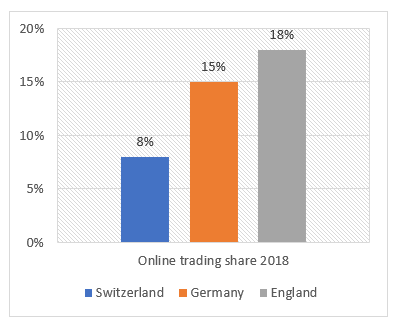How India leverages its demographic dividend
While most of the developed countries in the world are fighting against their aging populations by increasing the retirement age and welcoming migrants, other countries are worrying about how to fit large numbers of young people into the workplace. Deloitte’s Voice of Asia series reported that many countries in Asia have witnessed steady growth in their working age population, with more and more young men and women entering the labor markets each year. India is the top one country on the list.
According to the numbers from the World Economic Forum, half of India’s population is below the age of 25 and a quarter is below the age of 14. Bearing in mind that it is the second most populated country in the world, with 1.3 billion citizens, India makes up for a fifth of the world’s youth. As most economists predicted, India will benefit from the demographic dividend and will have a fast-growing economy.
To realize the demographic advantage, India will need to majorly accelerate job creation and investment in human capital to keep up with the growing working-age population. For currently, there are 17 million yearly entrants into the job market and only 5.5 million created jobs. [1] In a survey conducted by the OECD, over 30% of India’s youth aged from 15 to 29 are neither employed nor in education or training (NEETs). [2]
Isabelle Joumard, senior economist and head of the India desk at the OECD explained: “NEETs include all youth left outside paid employment and formal education and training systems. They are NEET because there are not enough quality jobs being created in the system and because they have little incentives or face too high constraints to be in the education and training systems.” [2]
Looking from a global point of view, youth unemployment rates remain above 20% in some European economies, the Middle East and North Africa have had youth unemployment rates close to 30% and things have continued to worsen over recent years. Nevertheless, the young people who have found work often have to content themselves with jobs that fail to meet their expectations [3] and 16.7% of working youth in emerging and developing economies live in extreme poverty [4].
Why are employment opportunities especially scarce in the least developed countries? Insufficient policy development, poor infrastructure and limited financing channels are among the many reasons for job shortages. According to the findings of e4e (an education for employment initiative driven by the International Finance Corporation and the Islamic Development Bank), the mismatch between education and the labor market demand is a major obstacle to job creation. [5]
As pointed out by several reports, developing an employability-driven skill ecosystem is key for leveraging India’s demographic potential. Rajasthan, the seventh most populated state in India, has a youth population aged below 25 that makes up nearly 55% of the state’s entire population. From 2012 to 2018, its unemployment rate increased from 4.5% to 7.7%. The problem of unemployment in Rajasthan is compounded with issues, such as the lack of quality trainers and the non-alignment of education and skilling. [6]
To tackle these problems, the state has continuously intensified the establishment of education infrastructure. In 2004 it became the first state in the country to implement a skill mission aiming to reduce the gap between demand and supply of skilled workforce and hence increase the employment rate. To further improve the quality of skilling, Rajasthan has founded skill universities, a pioneer project in the country. [6]
In Himachal Pradesh, located in northern India, a large share of employment is in agriculture. More than two thirds of its manpower are self-employed, and the amount of salaried jobs remains very low. In 2018, the Asian Development Bank (ADB) signed a loan with the Indian government to leverage the technical and vocational education and training (TVET) institutions and to scale up skilling ecosystems in Himachal Pradesh. The plans for the project include transforming 11 employment exchanges into model career centers, modernizing training equipment, employing a training information system and creating better access to quality market-relevant TVET for the state’s youth, in order to prepare them for the changing needs of the labor market. [7]
JANZZ.technology helps governments place workforce into labor markets with AI technology. In collaboration with MTESS and DGE, we have successfully implemented ParaEmpleo — a job matching solution in Paraguay. The collaboration between Paraguay and JANZZ.technology is within the framework of the Support Program for Labor Insertion which was supported by the Inter-American Development Bank (IDB) since 2011. The representative of IDB in Paraguay, María Florencia Attademo-Hirt, spoke highly of JANZZ’s technology, saying: “Innovative tools like this are what will improve the lives of Paraguayans, beyond the Mercosur and regional context”. [8] The innovative use of technology is the right way to solve today’s labor market problems. If you as a governmental organization are looking for solutions to fight against labor market issues in your country, please write now to sales@janzz.technology
[1] NASSCOM, FICCI and EY. 2017. Future of jobs in India – A 2022 perspective. URL: https://www.ey.com/Publication/vwLUAssets/ey-future-of-jobs-in-india/%24FILE/ey-future-of-jobs-in-india.pdf [2019.04.30]
[2] OECD. 2017. OECD Economic Surveys India. URL: https://www.oecd.org/eco/surveys/INDIA-2017-OECD-economic-survey-overview.pdf [2019.04.30]
[3] Guy Ryder. 2016. 3 ways we can tackle youth employment. URL: https://www.weforum.org/agenda/2016/01/3-ways-we-can-tackle-youth-employment/ [2019.04.30]
[4] ILO. 2017. Global employment trends for youth 2007. URL: https://www.ilo.org/wcmsp5/groups/public/—dgreports/—dcomm/—publ/documents/publication/wcms_598675.pdf [2019.04.30]
[5] Lars Thunell. 2012. How do we create more jobs for young people? URL: https://www.weforum.org/agenda/2012/01/how-do-we-create-more-jobs-for-the-youth/ [2019.04.30]
[6] Pwc and FICCI. 2019. Fast forward: relevant skills for a buoyant Indian economy. URL: http://ficci.in/spdocument/23062/FICCI-PwC-rajasthan-report.pdf [2019.04.30]
[7] ADB. 2018. ADB, India sign $80 million loan to help boost youth employability in Himachal. URL: https://www.adb.org/news/adb-india-sign-80-million-loan-help-boost-youth-employability-himachal [2019.04.30]
[8] IDB. 2019. Algorithms that get you a job in Paraguay. URL: https://www.iadb.org/en/improvinglives/algorithms-get-you-job-paraguay [2019.04.30]














